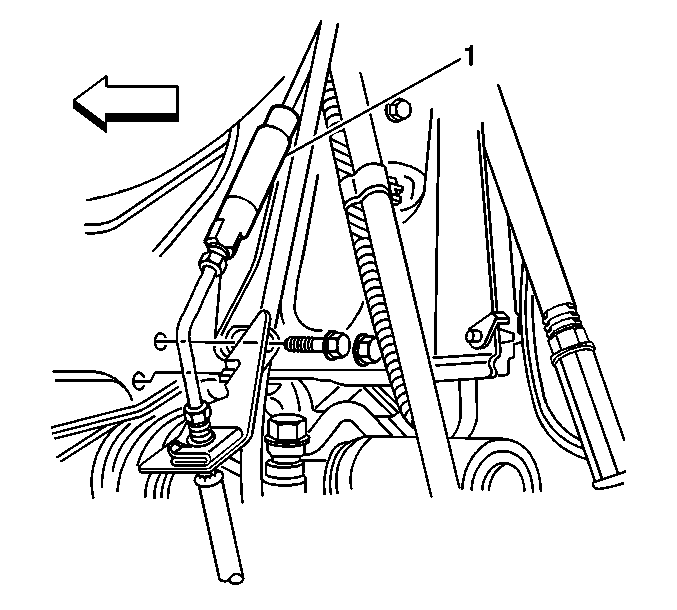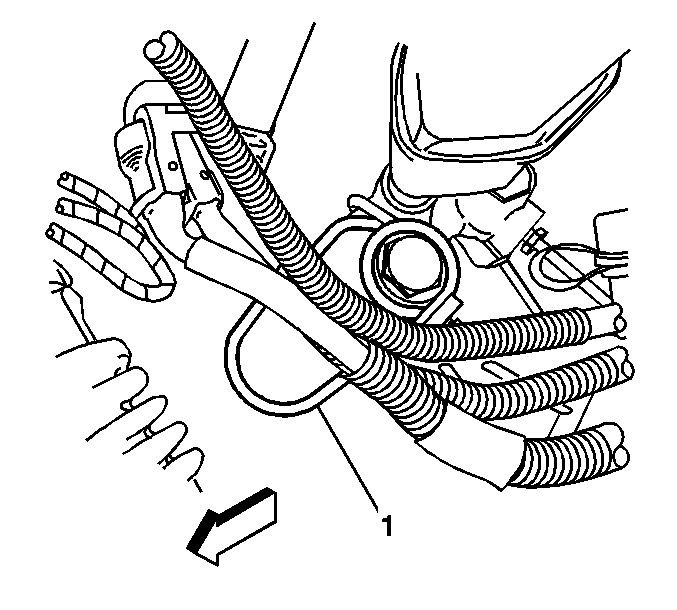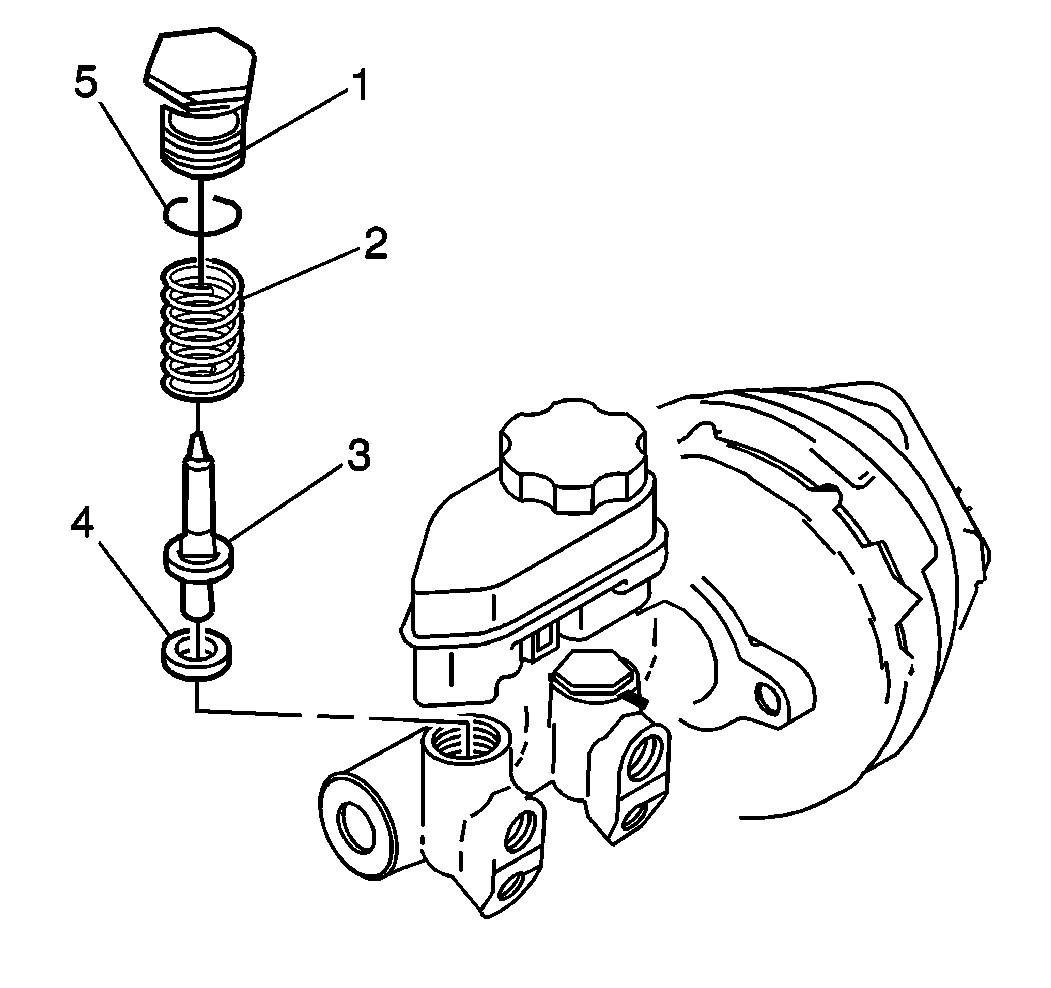Brake Proportion Valve Replacement With ABS
Removal Procedure
Important: Do not wash the proportioning valve (1) in any cleaning solution. The internal components are pre-lubricated with a special grease.
- Raise and suitably support the vehicle. Refer to Lifting and Jacking the Vehicle in General Information.
- Clean the dirt and foreign material from the brake pipes and proportioning valve (1).
- Disconnect the brake pipe fittings from the proportioning valve (1) using a backup wrench.
- Remove the proportioning valve.


Installation Procedure
- Install the proportioning valve.
- Connect the brake pipe fittings to the proportioning valve (1) using a backup wrench.
- Lower vehicle.
- Bleed the brakes. Refer to Hydraulic Brake System Bleeding .

Notice: Use the correct fastener in the correct location. Replacement fasteners must be the correct part number for that application. Fasteners requiring replacement or fasteners requiring the use of thread locking compound or sealant are identified in the service procedure. Do not use paints, lubricants, or corrosion inhibitors on fasteners or fastener joint surfaces unless specified. These coatings affect fastener torque and joint clamping force and may damage the fastener. Use the correct tightening sequence and specifications when installing fasteners in order to avoid damage to parts and systems.
Tighten
Tighten the Proportioning Valve Tube Nut to 15 N·m (11 lb ft).
Brake Proportion Valve Replacement Non ABS
Removal Procedure
Important: Do not wash the proportioning valve in any cleaning solution. The internal components are pre-lubricated with a special grease.
- Remove the bracket (1) from the master cylinder.
- Remove the master cylinder reservoir. Refer to Master Cylinder Reservoir Replacement .
- Remove the proportioning valve caps (1).
- Remove the O-rings (5).
- Remove the springs (2).
- Remove the proportioning valve pistons (3). Carefully use needle nose pliers so that you do not damage the piston stems.
- Remove the proportioning valve seals (4) from the pistons.
- Inspect the proportioning valve pistons for corrosion and deformation. Replace the valve pistons if necessary.
- Clean all of the parts in clean, denatured alcohol.
- Dry the parts with non-lubricated compressed air.


Installation Procedure
- Lubricate the following parts with the silicone grease that is supplied in the repair kit:
- Install new seals on the proportioning valve pistons. Ensure that the lip seals face up toward the cap.
- Install the proportioning valve pistons and the seals in the master cylinder body.
- Install the springs (2) in the master cylinder body.
- Install new O-rings (5) in the grooves in the proportioning valve caps.
- Install the proportioning valve caps (1) in the master cylinder body.
- Install the bracket (1) to the master cylinder.
- Install the master cylinder reservoir. Refer to Master Cylinder Reservoir Replacement .
- Bleed the brakes. Refer to Hydraulic Brake System Bleeding .
| • | O-rings (5) |
| • | Proportioning valve seals (4) |
| • | Proportioning valve piston stems (3) |

Notice: Use the correct fastener in the correct location. Replacement fasteners must be the correct part number for that application. Fasteners requiring replacement or fasteners requiring the use of thread locking compound or sealant are identified in the service procedure. Do not use paints, lubricants, or corrosion inhibitors on fasteners or fastener joint surfaces unless specified. These coatings affect fastener torque and joint clamping force and may damage the fastener. Use the correct tightening sequence and specifications when installing fasteners in order to avoid damage to parts and systems.
Tighten
Tighten the proportioning valve caps to 27 N·m (20 lb ft).

